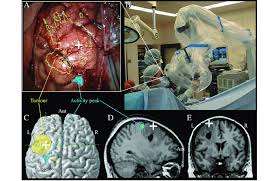Neurosurgery is one of the most technically demanding fields in medicine, requiring extreme precision, deep anatomical knowledge, and real-time adaptability. As surgical demands increase and cases grow more complex, Artificial Intelligence (AI) is emerging as a critical ally—enhancing neurosurgical techniques and significantly improving procedural accuracy.
The Role of AI in Modern Neurosurgery
Artificial Intelligence refers to machine learning algorithms and data-driven systems that mimic human intelligence. In neurosurgery, AI is being used to:
- Analyze complex imaging data
- Guide surgical instruments with sub-millimeter accuracy
- Predict outcomes and complications
- Assist in decision-making before, during, and after surgery
The integration of AI across all stages of neurosurgical care is not only improving technical performance but also enhancing patient safety and outcomes.
How AI Is Enhancing Neurosurgical Techniques
1. Advanced Preoperative Planning
AI platforms analyze MRI, CT, and functional imaging scans to:
- Identify optimal surgical entry points
- Map critical brain structures like motor and speech centers
- Simulate surgical outcomes for better preparation
These tools help surgeons customize their approach to each patient, improving efficiency and reducing risks.
2. Intraoperative Assistance and Real-Time Adaptation
AI-powered systems offer real-time support in the operating room by:
- Tracking instruments and brain tissue movement (brain shift)
- Updating anatomical models live during surgery
- Providing suggestions based on learned patterns from past procedures
This minimizes guesswork and allows for dynamic adjustments throughout the operation.
3. Image-Guided and Robotic-Assisted Precision
AI-driven robots and navigation systems can:
- Stabilize instruments during micro-surgery
- Enhance visual clarity using augmented reality
- Execute precise movements that surpass human steadiness
These innovations reduce the risk of damage to surrounding healthy tissues, especially in delicate areas of the brain.
4. Postoperative Assessment and Learning
AI doesn’t stop after surgery. It supports:
- Postoperative imaging analysis to assess surgical completeness
- Complication prediction using patient data
- Performance reviews for surgeon training and continuous improvement
By creating a feedback loop, AI helps improve future neurosurgical techniques and outcomes.
Benefits of Leveraging AI for Neurosurgical Accuracy
- Improved Target Localization: AI detects tumors, blood clots, or lesions with higher accuracy than traditional methods.
- Enhanced Safety: Precision targeting reduces damage to vital structures, minimizing neurological side effects.
- Efficiency: Shorter surgery times and fewer complications mean faster recovery and reduced hospital stays.
- Surgeon Support: AI acts as a digital co-pilot, reducing mental burden and helping surgeons focus on critical decisions.
Real-World Applications and Success Stories
Leading hospitals and research institutions are already seeing the benefits:
- AI-enhanced glioblastoma removal has led to more complete tumor resections.
- AI-assisted spine surgeries improve implant placement with better alignment.
- Robotic DBS placement for Parkinson’s has achieved higher accuracy and reduced side effects.
Challenges and Future Directions
While promising, several challenges must be addressed:
- Data Privacy and Ethics: AI systems must handle sensitive medical data responsibly.
- Training and Adoption: Surgeons and hospitals need adequate training and infrastructure to implement AI effectively.
- Cost and Accessibility: Advanced AI tools can be expensive and may not be widely available, especially in low-resource settings.
Looking ahead, the future of AI in neurosurgery may include:
- Personalized surgical plans generated by predictive AI
- Global tele-neurosurgery supported by cloud-based AI systems
- AI systems that continually learn from global surgical databases
Conclusion
Artificial Intelligence is not replacing neurosurgeons—it’s empowering them. By improving surgical techniques, enhancing accuracy, and providing real-time insights, AI is redefining what’s possible in neurosurgery. As these technologies become more integrated into clinical practice, we can expect safer, faster, and more successful brain and spinal surgeries, ultimately transforming patient care and surgical outcomes.
Would you like to repurpose this into a journal submission, infographic, or a medical technology whitepaper?
Also Read :
